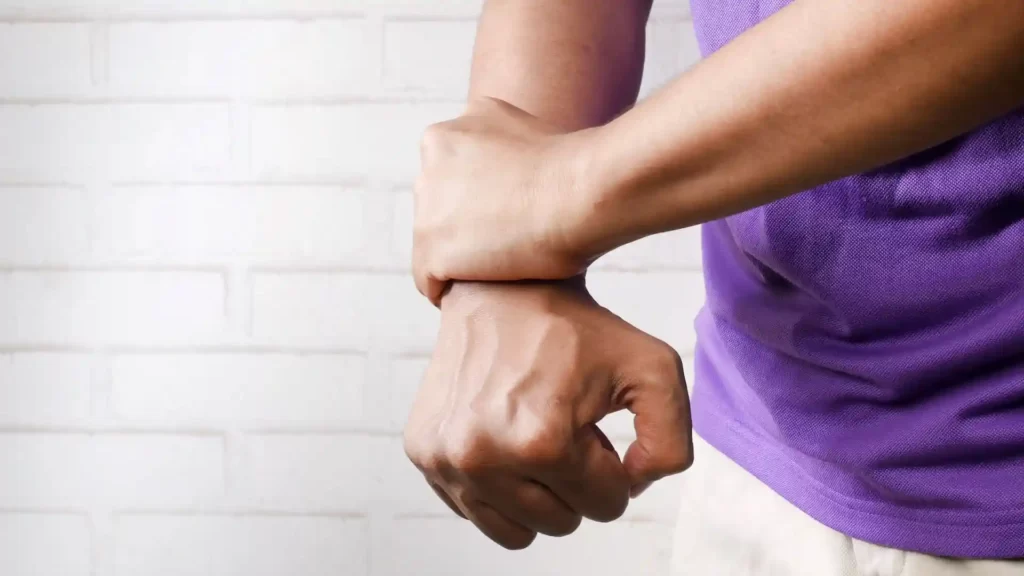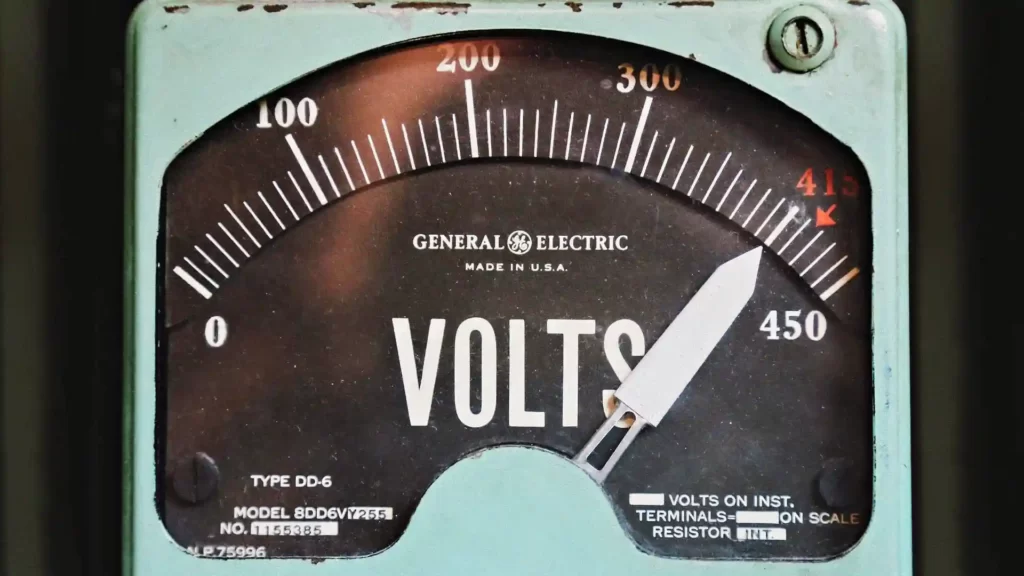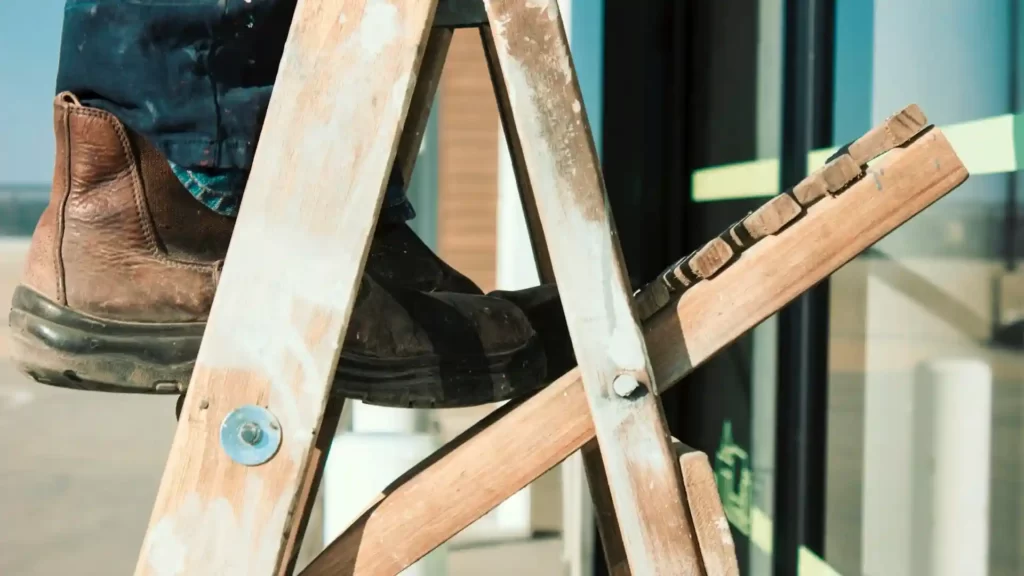Ladder-related accidents are a common cause of both workplace and home accidents. While you may think that falls are the only possible injury that ladders can cause, that is not the case. Ladders can cause harm, ranging from cuts and bruises to more severe accidents such as shattered bones and brain injury.
Some of these injuries happen even during low-risk, short-duration work. This is why you must take every precaution when using ladders. There are even ladder safety protocols in place.
For example, the Work at Height Regulations (WAHR) requires all businesses to take precautions to reduce hazards that could result in bodily harm.
Following the correct protocols will help keep you safe from harm when using a ladder. For this reason, we will discuss the most common ladder accidents and how to prevent them.
Common Ladder-Related Injuries
Most people who fall off ladders sustain serious injuries that necessitate medical attention. More than three million visits to emergency rooms in the United States each year are due to injuries suffered in falls. Most of these checkups are necessary because of ladder accidents. Serious injuries occur in about 20% of all fall incidents. The most frequent ladder injuries are:
- Shoulder fractures
- Back fractures
- Major lacerations
In addition to these, falls account for the highest number of traumatic brain injuries as well. In some cases, ladder injuries can be so severe that a victim might never fully recover. That being said, many other injuries can occur from ladder usage. Some of them are:
1. Overuse Injuries
Strains and sprains from carrying a large ladder account for over 50% of ladder-related accidents in various service sectors. This type of injury is especially prevalent in the construction sector. In some cases, construction workers must make more than a dozen daily trips, carrying a 28-foot extension ladder.
Typically, these ladders weigh about 70 pounds. Although this may not appear too heavy at first glance, carrying it for 12 hours a day is dangerous. Utilizing aluminum ladders as opposed to fiberglass or steel ladders is the optimal solution for this problem. Aluminum ladders may be a bit less secure, but they are much lighter than fiberglass ladders.

2. Over-Extending And Falling
Improper leveling and over-reaching are the leading causes of tip-and-fall accidents. Every year, these incidents inflict thousands of debilitating injuries. Some of them even lead to death. The best ladder practices teach you to keep your body between the side rails of the ladder at all times.
However, workers are sometimes unable to reach what they require, causing them to dangerously over-extend themselves on the ladder. One solution to this problem is to install outriggers at the bottom of an extension ladder to enhance its footprint.
If the climber cannot go beyond the footprint of the ladder, they will be unable to flip it over. Those outriggers would also level to the ground, giving the ladder a broad level foundation. You may also confine the user within the footprint of a stepladder by adding a caged platform at the top.
3. Slipping, Stumbling, And Falling
Many ladder accidents often happen as a result of risky user habits. Slipping, stumbling, and falling when working at heights are surprisingly common occurrences. Not using the proper gear is the leading cause of these injuries.
If you use a heavy-duty ladder, you should wear rubber-bottomed work boots or other suitable footwear. This is the only way to ensure that every step you take is safe and that you avoid unnecessary slipping.
Climbing a ladder two rungs at a time, attempting to move or alter the ladder while at height, and sliding down the stiles rather than lowering correctly and with care are all risky habits. Therefore, when using a ladder, you should always wear the proper equipment and take your time.
4. Electric Shock Injuries
Not all ladder-related injuries are the result of falling. Electrocution is another common injury associated with ladder use. This happens when people don’t pay enough attention to the surrounding area when placing a ladder.
The lack of awareness leads people to place ladders dangerously close to exposed power wires that can cause serious harm. To avoid this, never put a ladder near an electrical source.
This is especially important if you’re working with an aluminum ladder. Because of its conductivity, an aluminum ladder poses an electrocution risk to everyone nearby.

The Causes of the Most Common Ladder Accidents
Accidents involving ladders are extremely frequent, even though we can avoid them entirely. A wide variety of different problems can cause ladder accidents. That being said, the overwhelming majority of them occur for the following reasons:
1. Not Using an Appropriate Ladder
When it comes to ladders, like with most other occupations, selecting the correct equipment may make all the difference in terms of safety. Most common ladder accidents occur by using the wrong ladder for the job.
However, the ladder’s weight capacity may be one of the more important aspects you need to consider. Different types of ladders have different weight restrictions. This means that if you don’t use the appropriate type of ladder for the job, the ladder may break, causing the user to fall or get harmed.
Another factor to consider while choosing the right ladder for work is the ladder’s height requirement. Many accidents occur due to ladders being too short for a specific activity. When this happens, people often resort to placing the ladder on something to extend their reach or standing on the top rung to reach the height they require. Both situations are extremely dangerous and could result in catastrophic injury.
2. Using Broken or Old Ladders
Using old, worn, or broken ladders is another significant cause of ladder accidents. Ladders, like anything else, have a shelf life. After a few years, the stress of constant climbing takes its toll.
Damaged ladders are particularly hazardous since they may quickly shatter and cause major injuries. One of the leading causes of lacerations from ladder accidents is ladders that shatter when they break. Old, wooden ladders are particularly prone to shattering on impact.
To avoid injury from old ladders, properly check each one before using it. If you see any damage, do not use the ladder. Repair it, or buy a new one before resuming any work.
3. Improper Ladder Use
As we’ve already mentioned, the most common cause of ladder accidents is human mistakes. Never use a ladder for anything other than what the manufacturer intended. Also, do not extend or modify a ladder in any manner.
Maintain three points of contact with the ladder at all times. This is the only way you’ll be able to guarantee stability. Also, never try to reach for anything while standing on the ladder. Doing this risks shifting the ladder’s center of gravity too much and losing your footing. It’s safer to get down from the ladder, move it, and then climb back up.

4. Incorrect Ladder Positioning
When situating a ladder, ensure that the ground underneath it is level and stable. It would be best to avoid placing the ladder in front of any door people can open. If you don’t do this, there is a chance that someone will attempt to open the door while you are on the ladder.
This can cause you to lose balance and fall. Additionally, if you cannot make your ladder stable, have someone help support it while you are on it.
Who Is Accountable for a Ladder Fall?
If you are using a ladder at home and you fall, in most cases, the only person you can blame is yourself. However, that is not always the case. Suppose a perfectly sound ladder breaks while in use, possibly due to a manufacturing flaw. You might not be at fault in this situation.
There have been cases where people were injured using defective ladders, and the manufacturing company was held liable and had to compensate the victim. These situations, however, are exceedingly rare.
It’s always best to avoid ladder injuries and exercise caution. That being said, according to our friends from Zippy Shell Louisiana, who are in the moving industry and use ladders daily, if an accident occurs at work, the victim should be eligible for workers’ compensation. Most companies have comprehensive insurance policies that help in situations like these.
Furthermore, unsafe ladders on another person’s property might result in premises liability. If the victim falls and is injured while using an unsafe or defective ladder that belongs to the property owner, the property owner may be held liable.
Conclusion
Although ladder accidents are prevalent, there are a lot of things you can do to avoid them. You can prevent personal injuries if you properly inspect your ladders before you use them. You can also prevent any issues if you educate yourself on the best ladder for the job.
Also, you may be eligible for compensation if you sustain any injuries on the job, regardless if it’s your fault. That said, now you know the most common ladder accidents and how to prevent them. Hopefully, this knowledge will come in handy next time you need to work with a ladder.
Image credits – Photos by Biao Xie, Thomas Kelley, Towfiqu barbhuiya, Anaya Katlego on Unsplash
Joseph is the owner of LadderGeek. He is a home remodeling enthusiast. He has created this blog to share some of his knowledge on Ladder and accessories.



